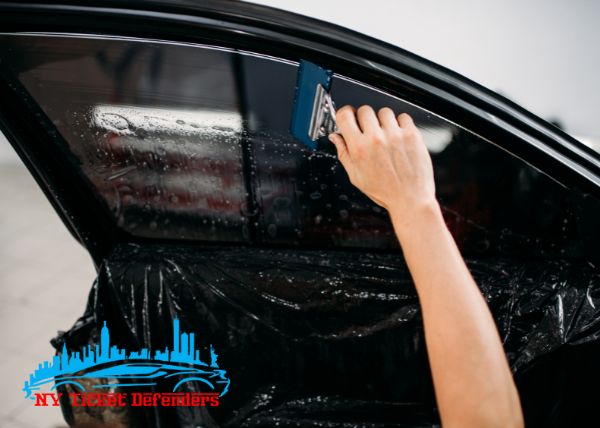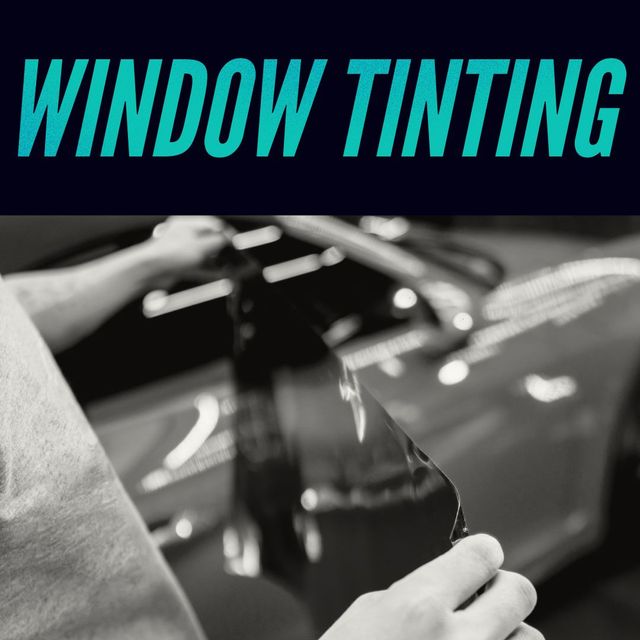Automobile Window Tinting for Boosted Safety And Security and Minimized Burglaries
Automobile Window Tinting for Boosted Safety And Security and Minimized Burglaries
Blog Article
Home Window Tinting Rules and Standards: What You Need to Know Before Tinting Your Car
Before proceeding with home window tinting for your automobile, it is crucial to familiarize on your own with the varied legislations and guidelines that govern this technique throughout various states. These policies determine the acceptable degrees of color darkness, commonly measured by visible light transmission (VLT) percentages, and include details terms for front windshields focused on ensuring roadway safety. Additionally, specific jurisdictions might provide medical exemptions for individuals with certifying problems. Comprehending these intricacies can conserve you from possible legal implications, however what are the certain rules in your state?
Summary of Window Tinting Regulations
Window tinting laws are frequently subject to variant throughout different jurisdictions, reflecting neighborhood laws and safety factors to consider. These laws dictate the permissible levels of tint darkness and reflectiveness on car windows, guaranteeing that chauffeurs keep ample exposure while additionally protecting against hazardous UV rays and warmth.
Most regulations classify home window tinting based upon the Visible Light Transmission (VLT) percentage, which indicates the amount of light that can pass via the home window. Generally, lower VLT portions signify darker tints. Regulations typically distinguish in between the front, side, and rear home windows, with stricter restrictions used to the front windscreen to boost security for both the vehicle driver and other road individuals.
Compliance with window tinting regulations is crucial, as violations can result in fines, mandatory elimination of the color, and potential increases in insurance premiums. It is important for car owners to acquaint themselves with neighborhood laws before continuing with window tinting installments.
State-by-State Tint Laws
Recognizing the specific window tinting policies in each state is essential for vehicle owners seeking to follow the legislation. Each state in the united state has actually developed its own set of rules governing window tinting, which can differ significantly. These guidelines often dictate the allowed levels of tint darkness, the sorts of windows that can be tinted, and any type of medical exceptions that may use.
For circumstances, states like California have strict constraints on color darkness for front windows, while others, such as New Mexico, might permit darker tints. In addition, particular states mandate certain exposure percents for different windows, consisting of the windshield, front side windows, and rear home windows. It is important for cars and truck owners to acquaint themselves with their state's laws to stay clear of possible penalties or charges.
Furthermore, some states might require an accreditation sticker to be positioned on colored windows, showing compliance with state legislations. Failure to abide by these policies not only runs the risk of legal repercussions yet can additionally affect safety and presence while driving. As a result, car owners need to conduct thorough research or consult regional authorities to ensure full understanding and conformity with state-by-state tint policies.
Allowed Tint Degrees and Types
Many car proprietors might be shocked to learn that permitted tint degrees and types vary extensively across different states. Each state has established its very own guidelines pertaining to the permissible darkness and reflectivity of window color, frequently measured by Visible Light Transmission (VLT) percentages. VLT describes the amount of light that can travel through the tinted home windows; thus, a lower percent indicates a darker tint.

In addition, the kinds of tint products enabled can differ, with some states restricting metallic or mirror-like finishes. It is necessary for automobile proprietors to acquaint themselves with their state's details legislations to ensure conformity. Non-compliance can result in fines, required removal of the color, or other legal repercussions, making it essential to recognize these guidelines before continuing with installment.
Medical Exceptions for Tinting
While not all states supply allocations for clinical exceptions relating to window tinting, those that do acknowledge the requirement for details people to boost presence and comfort because of medical address problems. Numerous clinical conditions, such as lupus, skin cancer, and particular eye disorders, can render people especially conscious sunshine. Subsequently, these people may call for darker tints to shield themselves from harmful UV rays and glare.

It is necessary to note that despite having a medical exception, there may still be constraints on the degree of tint permitted. Compliance with state legislations ensures that people are both protected and within legal restrictions. Those taking into consideration medical exceptions ought to contact their regional Department of Electric motor Cars or equivalent authority to comprehend the treatments and demands necessary to obtain an exception effectively.
Charges for Non-Compliance
Stopping working to abide with home window tinting laws can result in considerable penalties, which vary by state. Regulation enforcement agencies are empowered to issue citations for cars that do not adhere to the specified tinting laws. These penalties typically include penalties, which can range from moderate amounts to numerous hundred dollars, relying on the intensity of the infraction and the state in inquiry.
In some territories, repeated offenses may result in escalating fines or additional fines, such as mandatory court appearances. Non-compliance may necessitate the removal of unlawful tinting, commonly at the Our site proprietor's expenditure. In severe situations, regular offenders may face suspension of their car registration until compliance is achieved.
In addition, insurance policy ramifications might occur from obtaining multiple citations for window color violations. Insurance companies may view such infractions as an indication of riskier behavior, potentially causing increased premiums or trouble in protection.
To prevent these penalties, it is crucial for car proprietors to acquaint themselves with their regional home window tinting regulations and make sure that their vehicle complies (Window Tinting). This proactive strategy not only stays clear of legal ramifications however likewise advertises road safety and security
Verdict

Most policies categorize home window tinting based on the Visible Light Transmission (VLT) percent, which indicates the amount of light that can pass with the home window. Compliance with home window tinting regulations is vital, as offenses can result in penalties, required elimination of the tint, and potential rises in insurance coverage costs.Understanding the certain home window tinting regulations in each state is important for vehicle owners seeking to conform with the legislation. These laws usually determine the allowable degrees of color darkness, the types of windows that can be tinted, and any type of clinical exceptions that may use.
For circumstances, states like California have rigorous limitations on tint darkness for front home windows, while others, such as New Mexico, may enable darker colors.
Report this page